Reef board game review

We’ve taken a slight break from game reviews the last few weeks because June is a great time for family vacations once the kids are out of school.
And now it’s time to dive back in with a family board game that reminds us of fun family vacations – Reef.
That’s because we enjoy snorkeling and seeing the wonderful underwater beauty of coral reefs. And Reef, by Next Move Games, brings back those memories.
Yet that’s not the only reason we enjoy playing Reef. The biggest reason is because it’s a colorful and fun game to play.
How to play Reef
Reef is a simple game to learn and play. Players try to score the most points by adding colorful coral pieces to their growing reef and scoring patterns.
To begin, each player gets a player board and one coral piece of each color to place in the 4 center spaces of their board. They also get 2 cards for their starting hand. The rest of the deck is placed faced up in the center of the table and 3 cards are drawn and placed face up in a row next to the deck.
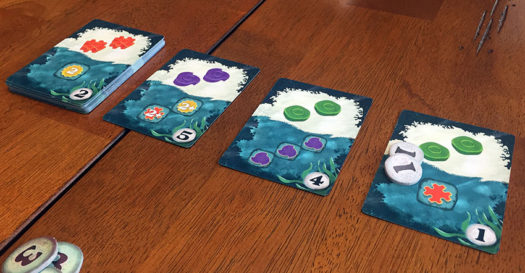
On a player’s turn, they can either take a card or play a card.
Players can take one of the 3 cards in the display for free to add to their hand. They may also take the top card of the deck, but they must pay 1 point token to do so. They place this point token on the lowest printed value card in the display.
Players have a hand limit of 4 cards. So if they already have 4 cards in their hand, they must play a card instead.
When a player plays a card from their hand, it lets them both add more coral to their reef as well as score points if they also match the pattern shown on the card. To do so, they place the card they’re playing into their personal discard pile and take the 2 coral pieces shown on the top of the card.

They then place these coral pieces anywhere on their board (on a blank space or on top of existing coral pieces). Once a piece is placed, it can not be moved for the rest of the game.
Then the player may score for the pattern shown on the bottom of the card they played. If that pattern exists on their board (from a top-down view), they score the number of points shown in the bottom corner of the card as many times as the pattern appears.
Printed numbers within the shown pattern refer to the height of that coral piece. For example, a number 3 in a purple coral symbol means the purple piece on the player board must be at the 3rd level high.
Each piece can only count towards being part of one pattern. (No double-dipping.)
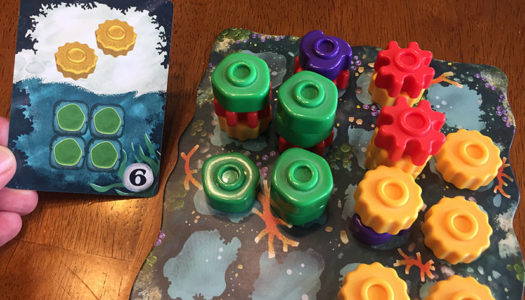
Players continue taking turns until at least one supply of coral pieces or the card deck runs out. If a color supply runs out, the game ends after the current round of play.
Each player with cards left in hand may score one occurrence of those patterns. The player with the most points wins the game!

Can the whole family enjoy playing Reef?
Reef is a fun family board game for a number of reasons. It’s simple to play. It has quick player turns. It has great components. It’s full of interesting choices. And it has a good mix of strategy and luck.
The first thing players notice about Reef is the fantastic coral pieces. The chunky and colorful pieces are the centerpiece of the game. Not only do they present a great tactile experience with the game, but they’re also very functional. While each color is uniquely shaped, they all nest on top of each other very well.
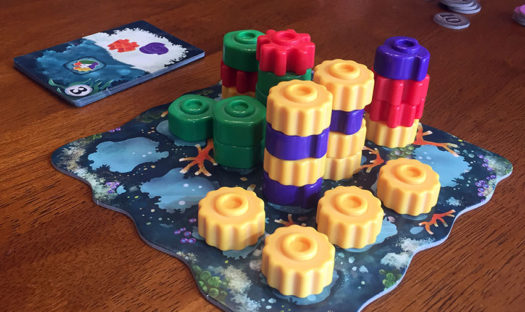
Grabbing 2 pieces when you play a card and stacking them on your growing coral reef just feels good.
The tricky part is deciding where to play them!
Well, actually, the tricky part is the whole combination of which cards to take, which to play, and when to do so. Then comes the choice of where to play them.

The reason is because the coral pieces shown at the top of the card will not be the same colors of pieces shown in the pattern at the bottom of the card. So the order in which you play cards and add coral to your reef is very important.
While you’d love to score every pattern in your hand, you simply won’t be able to do so. Some cards you’ll have to play for their collection potential and others for their pattern scoring.
Thus, planning ahead is a key part of the game.
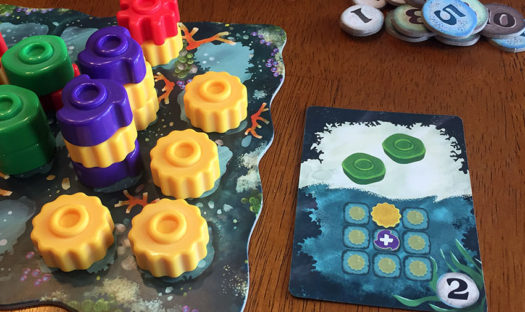
Unfortunately, the other players will mess with your plans.
While there isn’t any direct player interaction (ie. Stealing pieces or cards, stacking on other players’ boards, or skipping turns), players will impact each other by the choice of cards they take from the central display. Players will constantly be eyeing the cards that come up to see which will play best into the the mix of cards they’ve collected and plan to play.
It’s inevitable that players will take cards that you hope to get. So you’ll have to be able to adjust on the fly.
Which means there’s a fair amount of planning ahead and strategizing that may be difficult for younger players to grasp. In fact, it may also take older players an initial play or two before they really get the synergy of play.
And that makes for a great game.
Reef is a game that on the surface looks too simple but keeps drawing us back to it. It’s that great balance that we enjoy.

How does Reef score on our “Let’s Play Again” game meter?
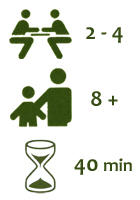 Reef gets a high score on our “let’s play again” game meter. And not only from our family. It’s also a game that’s been a hit at our monthly Game Night with my buddies.
Reef gets a high score on our “let’s play again” game meter. And not only from our family. It’s also a game that’s been a hit at our monthly Game Night with my buddies.
The quick flow of play (with players just taking one action on their turn) leads to games that go by very quickly. Before we know it, the game ends and we’re left wanting to try again.
Reef is also a game that’s super easy to set up and play again. Simply re-sort the coral pieces and point tokens, shuffle the deck and deal out 2 cards to each player, put out 3 cards in the display and you’re ready to play.
If you’re looking for a colorful family game with fantastic components, interesting choices, planning ahead, and a quick flow, grab a copy of Reef for your family.
We’d like to thank Miniature Market for a review copy of Reef.



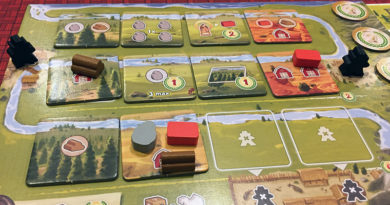
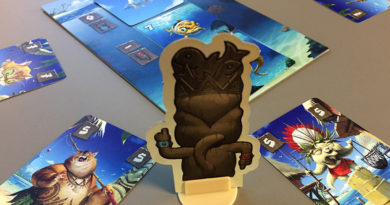

this was really great to know. i was really wanted to know some details about this game.